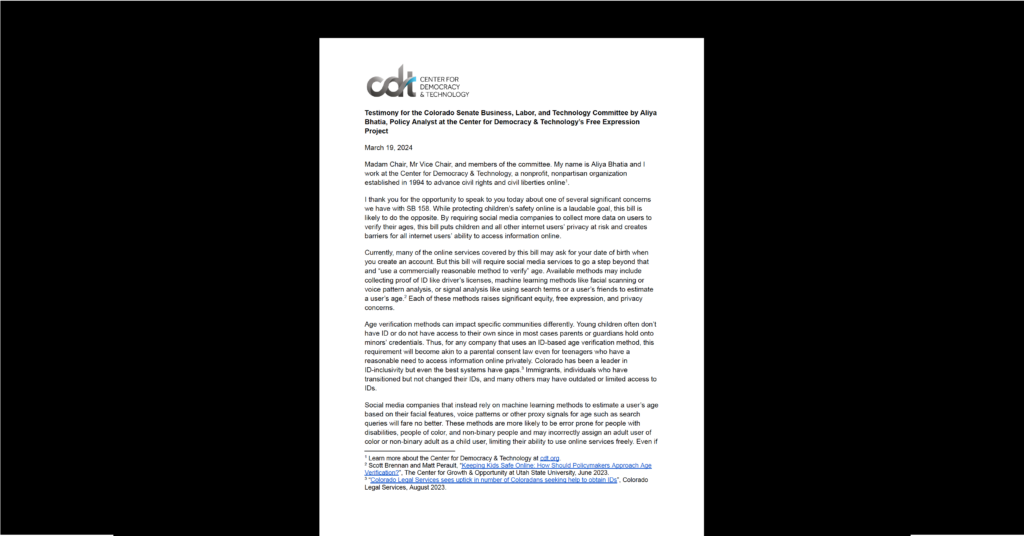In 1995, it was far from clear what First Amendment standards would apply to the emerging online environment. It was also equally unclear exactly what form the online world would ultimately take, with AOL a dominant player and direct Internet access still a rarity for most users. By 1996 Congress tried to rein in this nascent technology and reduce the level of discourse online to only what is fit for children. That attempt, via a law called the Communications Decency Act, was struck down on a constitutional challenge that relied in no small part on the argument that "user control" trumped the government's heavy hand of censorship.
In 1995, Jerry Berman and Danny Weitzner laid out the "user control" theory for protecting users from unwanted content while also protecting free speech online. Under this theory, if technology can provide users (including parents) with the ability to control what they (and their children) access online, government regulation of content would be unconstitutional.
John Morris and Cynthia Wong have
published a paper that examines the origins of this theory and how it has been applied in the courts — and whether it has fared the test of time. In their paper they write:
As Berman and Weitzner suggested, with such a diversity of effective and feasible user control mechanisms within practical reach of parents, the goal of protecting children from pornography and other potentially harmful material on the Internet and other interactive media can be achieved without heavy-handed government restrictions. The courts have unmistakably affirmed this notion: When faced with a choice between a one-size-fits-all speech restriction and a specific user-controlled technological solution available for parents to use, courts have made clear that a blanket speech restriction cannot survive strict scrutiny absent a showing that the technological solution is not as effective.
This theory of "user control" or “user empowerment” has been tested and retested in the courts and has withstood fifteen years of legal sparring — a testament to the power of the user control theory.
The Morris-Wong paper concludes that "user control" on the Internet and other communications technologies is just as vital and important today for protecting free speech as it was when Berman and Weitnzer first advanced it. As the Supreme Court has observed:
Technology expands the capacity to choose; and it denies the potential of this revolution if we assume the Government is best positioned to make these choices for us.
Looking back, we can see that both the courts and industry have moved in the right direction: by placing empowerment tools in users’ hands so they can shape their online experience, we collectively have built a solid foundation for an open and uncensored Internet.


